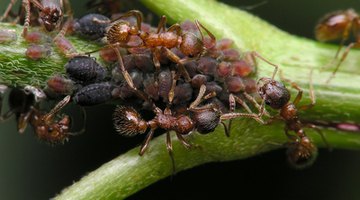Demon Insecticide Safety Issues
Table of Contents
Demon insecticide is a top seller, according to the Bugsaway.com website. It is an odorless formula that is made from synthetic pyrethroid.

Safe for use on all plants except those in food-processing areas, homeowners often choose it when they need a little help in controlling invasions of ants, cockroaches, crickets, spiders and other insects. Its active ingredient is Cypermethrin.
Keep Away From Children
The product label of Demon Max insecticide warns that users of the product should keep it away from children because it causes “substantial but temporary” injury to the eyes if contact is made. The label also cautions that this product might be fatal if swallowed. If the skin absorbs Demon it is also harmful, and the product also can harm the mucous membranes and lungs if you breathe in the vapors.
Protective Clothing Must Be Worn
Those who work with Demon insecticide are cautioned to wear a chemical-resistant apron or long-sleeved coveralls over their clothing. People who function as mixers, loaders or applicators of this product must wear respiratory-protection devices and eye protection when they work in poorly ventilated areas.
Environmental Hazards
Demon is “extremely toxic” to fish, according to the product label, which also warns that care must be observed if the product is applied to areas near bodies of water. It must never be applied directly to water. Demon is also toxic to bees when it is applied to areas where it might drift to foraging insects. Therefore, it must never be used in windy conditions. The product label also states that you should never allow Demon to enter sewer systems or sewage-treatment facilities.
Demon is Flammable
Another label precaution states never to use or store this product near fire or flame of any kind.
Do Not Use Around Food
Demon insecticide is not approved for use in areas where food is prepared, such as restaurant kitchens. However, it is often used to control cockroaches, ants and other insects in non-food areas, such as rooms where garbage is stored, bathrooms, offices, boiler rooms, rooms containing machines, locker rooms, garages and mop closets.
Writer Bio
Barbara Fahs lives on Hawaii island, where she has created Hi'iaka's Healing Herb Garden. Fahs wrote "Super Simple Guide to Creating Hawaiian Gardens" and has been a professional writer since 1984. She contributes to "Big Island Weekly," "Ke Ola" magazine and various websites. She earned her Bachelor of Arts at University of California, Santa Barbara and her Master of Arts from San Jose State University.
Photo Credits
- ants & ahises image by Marek Kosmal from Fotolia.com
- ants & ahises image by Marek Kosmal from Fotolia.com
More Articles



